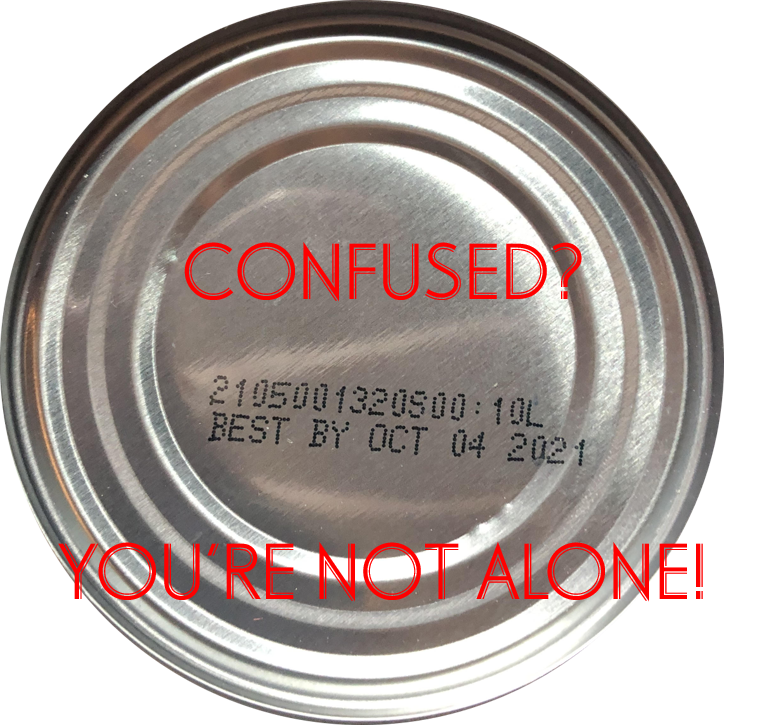There are growing worries about global food security. Earlier this year, UN Secretary-General António Guterres, stated, “This year’s food crisis is about lack of access. Next year’s could be about lack of food.”[1] When lack of food is a concern, food waste should also be a concern. And, when it comes to food waste, few people think about the important role played by packaging labels. I first wrote about his subject nearly a decade ago.[2] In that first article, I quoted Dr. Londa Nwadike, an Extension Food Safety Specialist, who believes that a lot of perfectly good food gets tossed because of confusion about dates printed on food packages (e.g., “sell by” dates, “best if used by” dates, and “use by” dates).[3] She noted that the USDA offered the following definitions for various terms used on food product labels:
• “Sell by” date: Tells the store how long to display the product for sale. You should buy the product before that date.
• “Best if used by (or before)” date: Recommended for best flavor or quality. It is NOT a purchase or safety date.
• “Use by” date: The last date recommended by the manufacturer for the use of the product while at peak quality.
Nwadike noted, “These dates generally refer to food quality, rather than safety. However, they can give a general idea of how long the food has been in the market.” Confusion still reigns when it comes to this type of labeling. Journalist Dee-Ann Durbin (@deeanndurbin_ap) recently wrote, “As awareness grows around the world about the problem of food waste, one culprit in particular is drawing scrutiny: ‘best before’ labels.”[4]
Confusing Labels
Durbin notes, “Manufacturers have used the labels for decades to estimate peak freshness. Unlike ‘use by’ labels, which are found on perishable foods like meat and dairy, ‘best before’ labels have nothing to do with safety and may encourage consumers to throw away food that’s perfectly fine to eat.” As Nwadike pointed out above, even “use by” labels have little to do with safety. The result of such labels, however, is that consumers toss out packaged foods once those dates have been exceeded. Patty Apple, a manager at Food Shift, an Alameda, California, nonprofit that collects and uses expired or imperfect foods, told Durbin, “[Consumers] read these dates and then they assume that it’s bad, they can’t eat it and they toss it, when these dates don’t actually mean that they’re not edible or they’re not still nutritious or tasty.”
Consumers have good reasons to be cautious. The Centers for Disease Control (CDC) estimates that each year roughly 1 in 6 Americans (or 48 million people) gets sick, 128,000 are hospitalized, and 3,000 die of foodborne diseases.”[5] Jill Roberts (@stargazermcb), an Associate Professor at the University of South Florida’s College of Public Health, observes, “Avoiding unseen food hazards is the reason people often check the dates on food packaging.”[6] Roberts notes, however, that food labels carry “a dizzying array of phrases” including: “best by,” “use by,” “best if used before,” “best if used by,” “guaranteed fresh until,” “freeze by,” and even a “born on” label applied to some beer. According to Debasmita Patra, a University of Maryland researcher, Roberts’ list of date labels only scratches the surface. She explains, “We have 50 different types of date labels that are currently used in the US because there is no regulation — best by, best if used by, use by — and we as consumers don’t know what these things mean. The labeling is the manufacturer’s best estimation based on taste or whatever else, and it is not scientifically proven.”[7]
Patra and her colleagues are attempted to “scientifically prove what is the best way to label foods.” Their efforts are not the only ongoing projects in this area. Anbuhkani “Connie” Muniandy, a PhD candidate at Purdue University, has conducted research that “has helped develop innovative technology to help predict the shelf life of food and beverages.”[8] It turns out, however, that predicting when food is no longer safe to eat is not an easy task. As a result, Roberts reports, “A joint study by the Harvard Food Law and Policy Clinic and the National Resources Defense Council recommends the elimination of dates aimed at consumers, citing potential confusion and waste.” According to Durbin, some UK grocery chains have taken that advice to heart. She reports, “To tackle the problem, major U.K. chains like Waitrose, Sainsbury’s and Marks & Spencer recently removed ‘best before’ labels from prepackaged fruit and vegetables.” In addition, she reports, “The European Union is expected to announce a revamp to its labeling laws by the end of this year; it’s considering abolishing ‘best before’ labels altogether.”
Is eliminating date labels the best option? Journalist Katie Deighton (@DollyDeighton) reports, “Some analysts said getting rid of date labels could backfire. Date labeling helps customers quickly scan for the freshest items on the shelf, and lets them easily keep track of the oldest and newest items in their fridges, said Andrew Busby, founder of U.K.-based retail-analyst firm Retail Reflections. … ‘Consumers now more than ever need as much help and information as they can get from supermarkets, and this seems to be withdrawing something from them,’ Mr. Busby said.”[9]
Concluding Thoughts
The time has surely come when food date labels should be standardized and have real meaning. Deighton reports efforts are being made in that direction. She writes, “Federal agencies, trade groups and politicians are pushing for companies to stop using a range of labels with unclear meanings — from ‘enjoy by’ to ‘expires on’ — and instead come up with common standards.”[9] Will such efforts produce positive results? That’s unclear. Deighton notes, “The Consumer Goods Forum, a global trade group, in 2017 … recommended that retailers and food producers go with a quality date for nonperishable items, such as ‘best if used by,’ or an expiration date for perishable items, such as ‘use by.'” Two years later, in 2019, the U.S. Food and Drug Administration “urged the food industry to adopt a single, standardized ‘best if used by’ label on items that are safe to consume even when their taste or smell may have deteriorated.” Neither of those efforts produced any kind of standardization. Food safety and food waste could be improved if date labels were standardized with dates that are clearly understood by consumers.
Footnotes
[1] United Nations, “UN chief warns impact of Ukraine war on world is worsening,” France24, 8 June 2022.
[2] Stephen DeAngelis, “Preventing and Mitigating Food Waste,” Enterra Insights, 15 November 2013.
[3] Londa Nwadike, “Myth: Products are not safe to eat after their ‘sell by’ date,” Mizzou Nutrition Mythbusters, 25 September 2013.
[4] Dee-Ann Durbin, “Keep it or toss it? ‘Best Before’ labels cause confusion,” Associated Press, 5 October 2022.
[5] Staff, “Estimates of Foodborne Illness in the United States,” Centers for Disease Control and Prevention.
[6] Jill Roberts, “Food expiration dates don’t have much science behind them – a food safety researcher explains another way to know what’s too old to eat.” The Conversation, 21 July 2022.
[7] Staff, “UMD Researchers Seek to Establish the Science Behind Date Labeling,” Quality Assurance Magazine, 19 May 2020.
[8] Staff, “Student’s research reduces food waste by improving use-by dates,” Purdue University, 3 June 2021.
[9] Katie Deighton, “Supermarkets Move to Simplify Date Labels to Cut Food Waste,” The Wall Street Journal, 12 August 2022.





